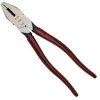That would be the hoses, right? Not the aluminum tubing? I've seen that too often. A check of hose flexibility should be part of every annual, and the manufacturers often call for new hoses in the engine compartment every five years. Fuel and oil on the inside, and heat and weather on the outside, take their toll.
A check of control systems is part of an annual, too. How does a mechanic check control systems without actually taking the time to open inspection panels and remove whatever interior is necessary to see cables and pulleys? He can't, and I've found way too many worn cables and seized pulleys to not know that a lot of guys are taking shortcuts and pencil-whipping the inspections. It takes a long time for a cable to wear to fray as badly as the OP's. That's what one gets for insisting on "economical" inspections. And for hardened hoses in the engine compartment? No excuse at all for that. Sounds like a walkaround inspection.
The OP should also get the elevator cables checked. The bottom one especially, since it runs across a rub strip on a bulkhead, and I've found them badly worn there. The aileron cables wear at the idler pulleys inboard of the bellcranks. Those pulleys seize up. ANd in the center of the ceiling the aileron and flap cables wear at idlers there too. They have minimal arc of contact, and vibration chatters them on the hard nylon pulley and chafes them. It would be interesting indeed to have a look at that airplane. And when were the trim actuators last overhauled?
Electronic Code of Federal Regulations
Title 14: Aeronautics and Space
PART 43—MAINTENANCE, PREVENTIVE MAINTENANCE, REBUILDING, AND ALTERATION
Appendix D to Part 43—Scope and Detail of Items (as Applicable to the Particular Aircraft) To Be Included in Annual and 100-Hour Inspections
(5) Flight and engine controls—for improper installation and improper operation.
(7) Lines, hoses, and clamps—for leaks, improper condition and looseness.

